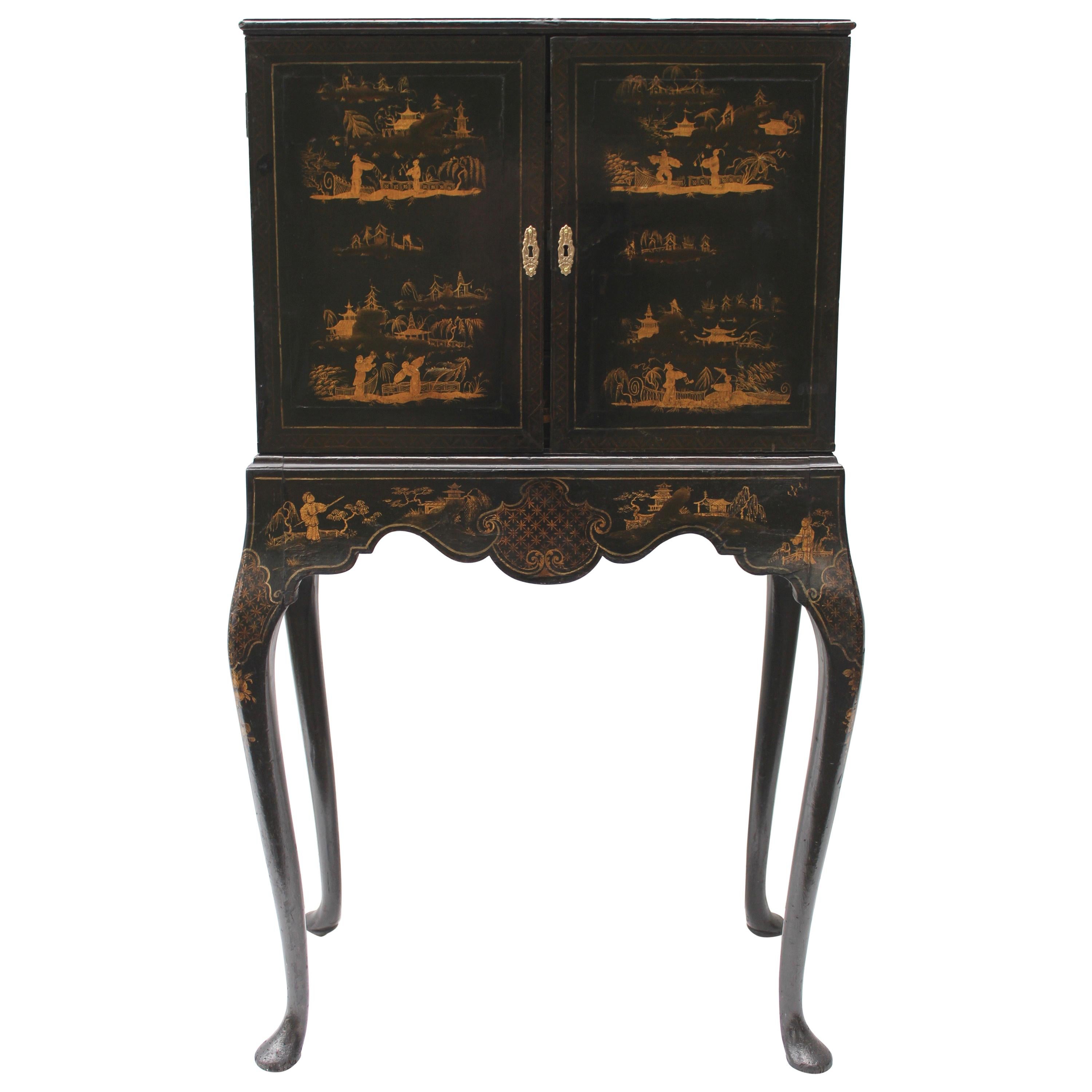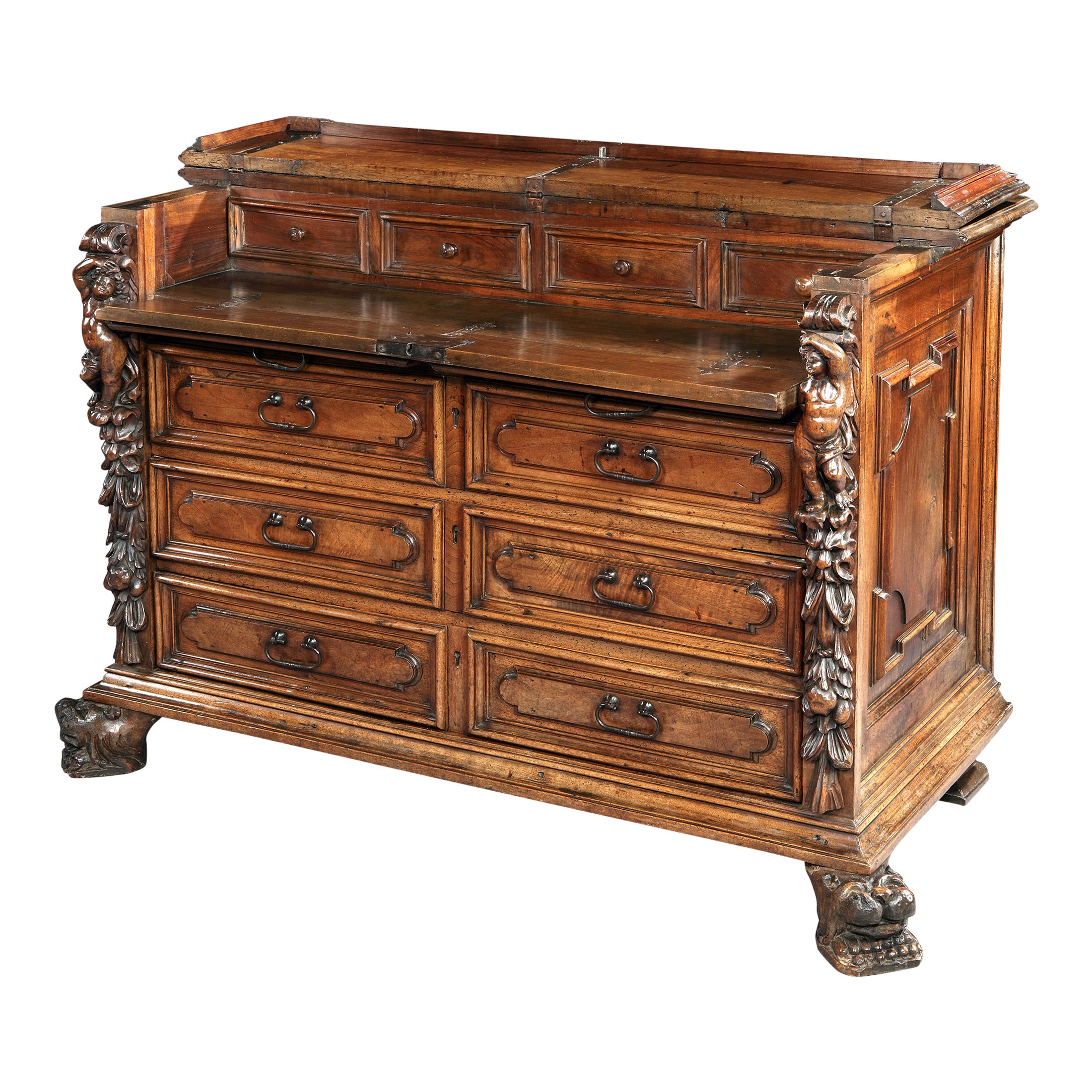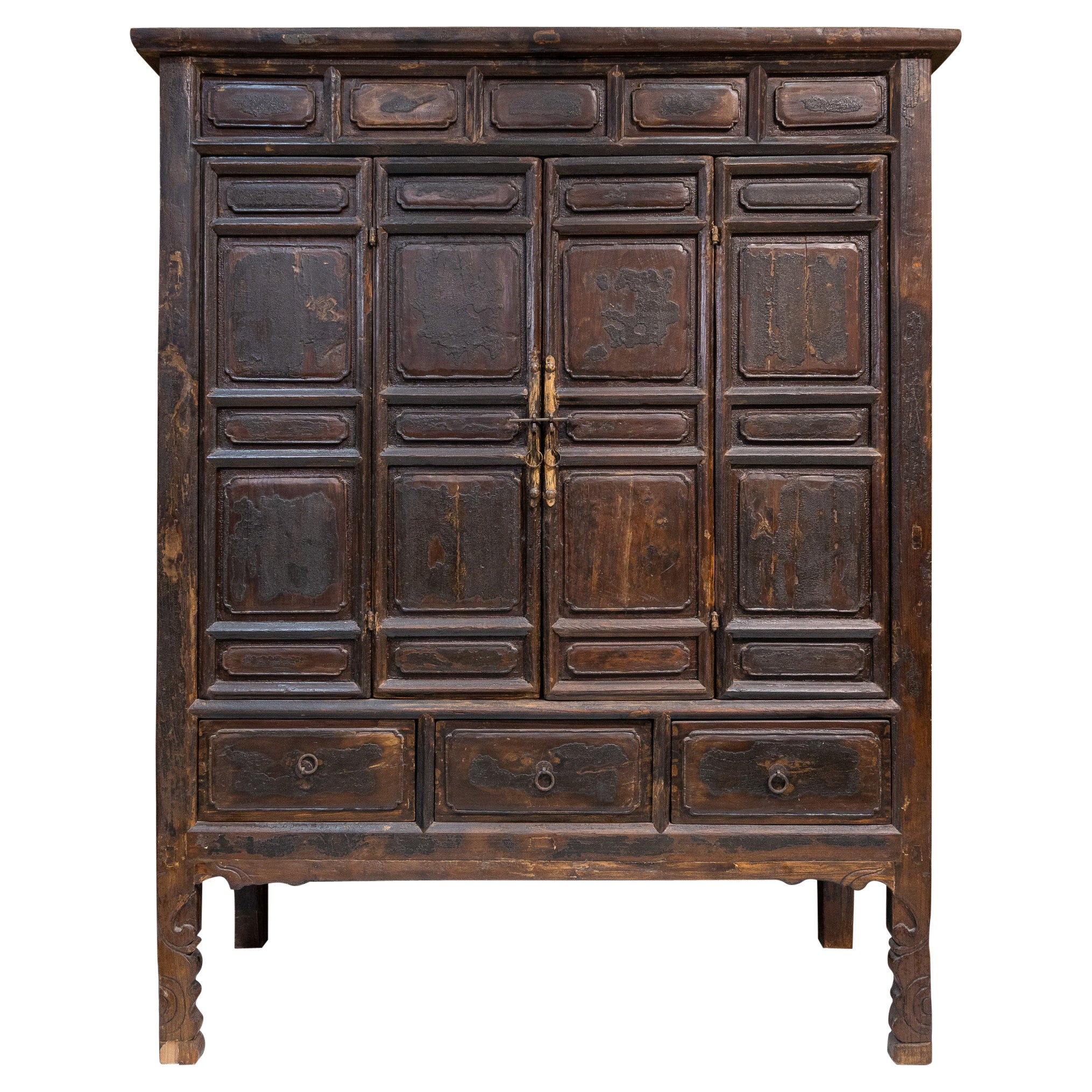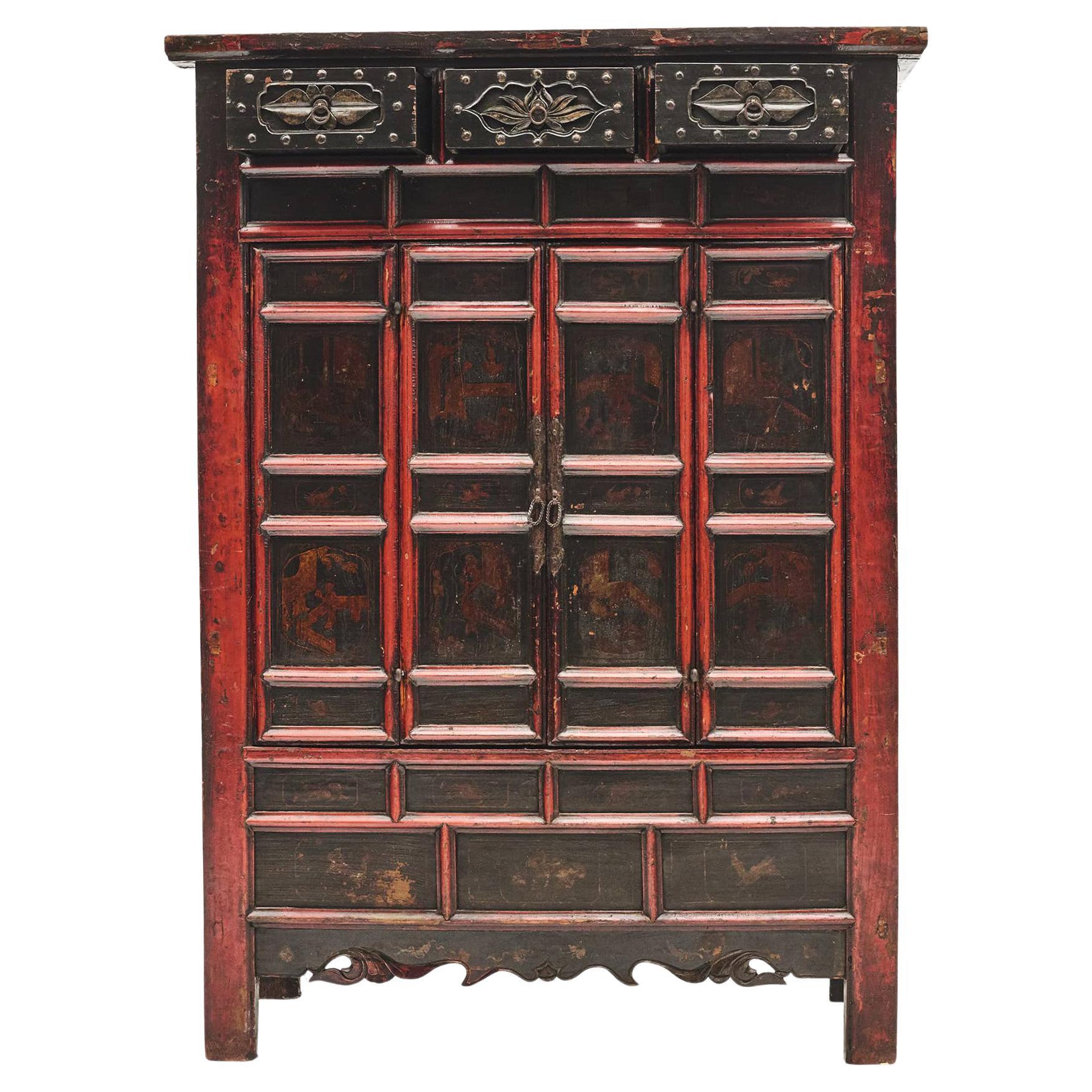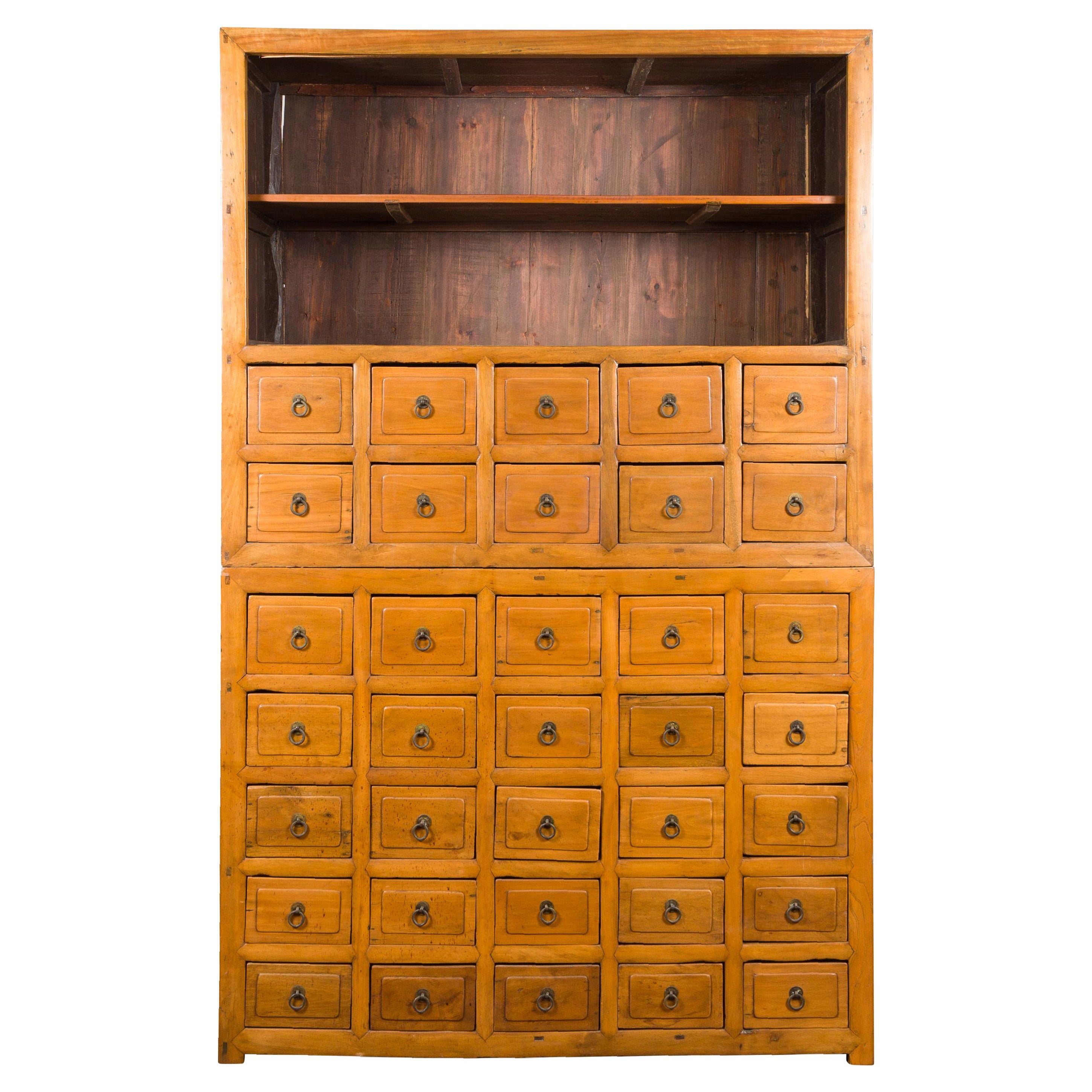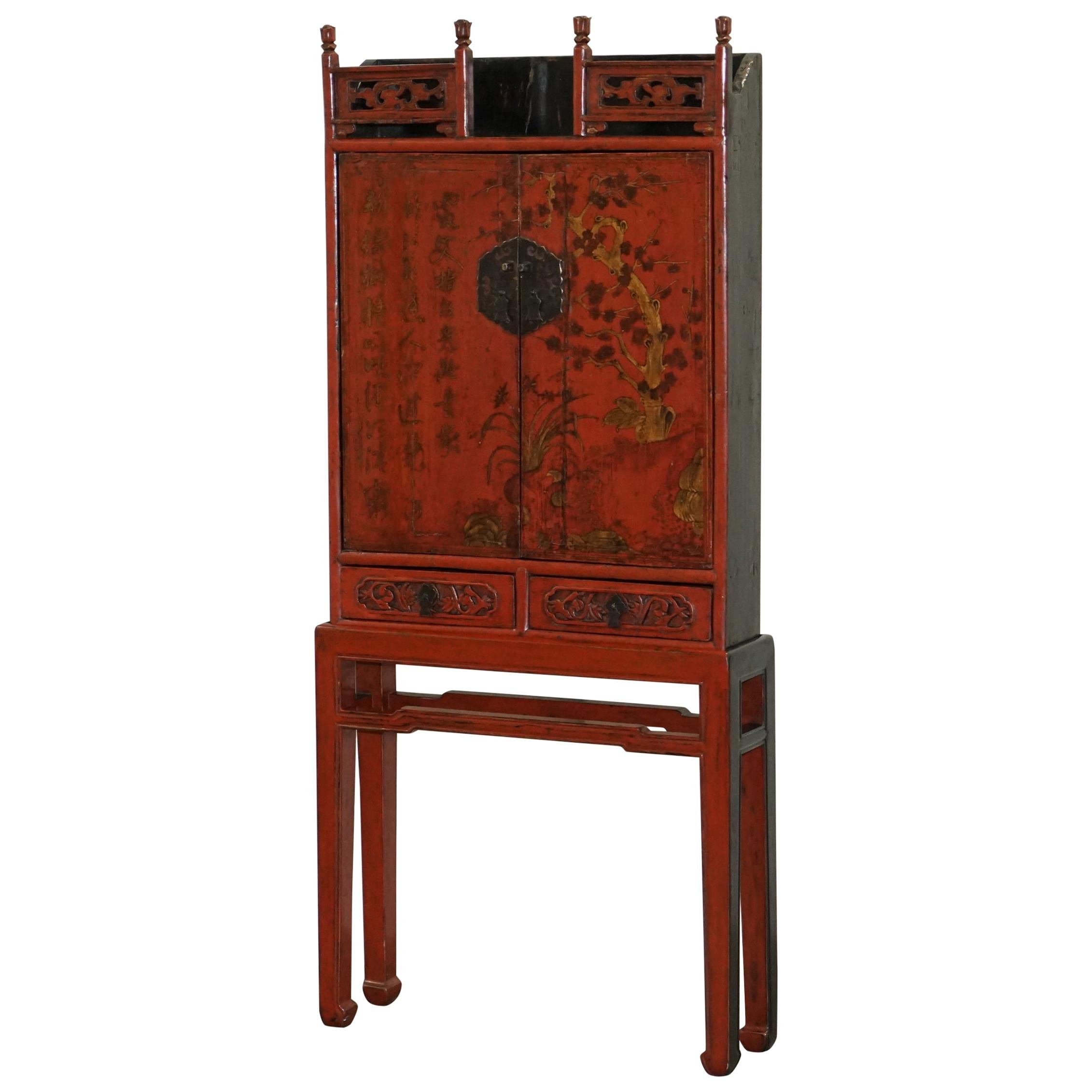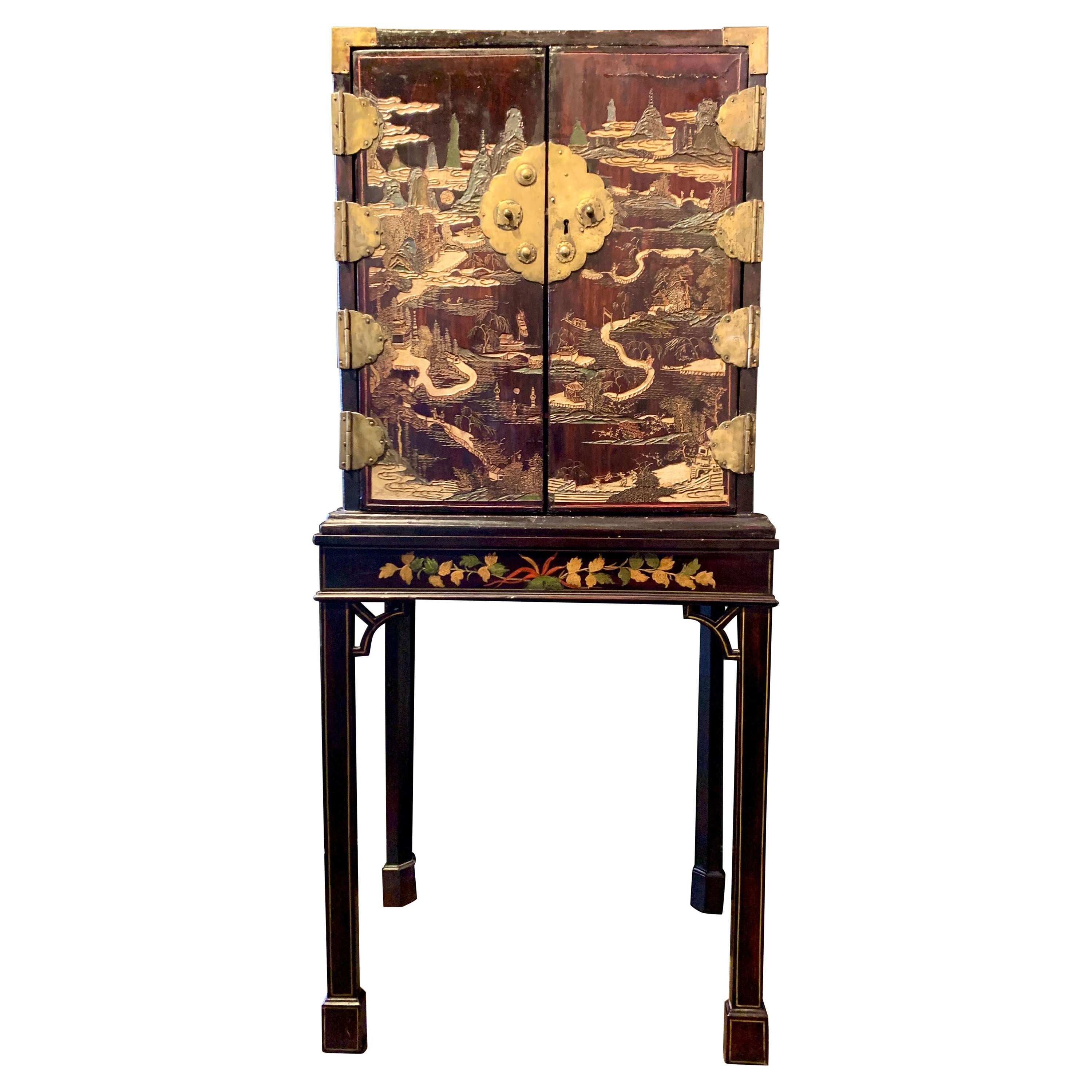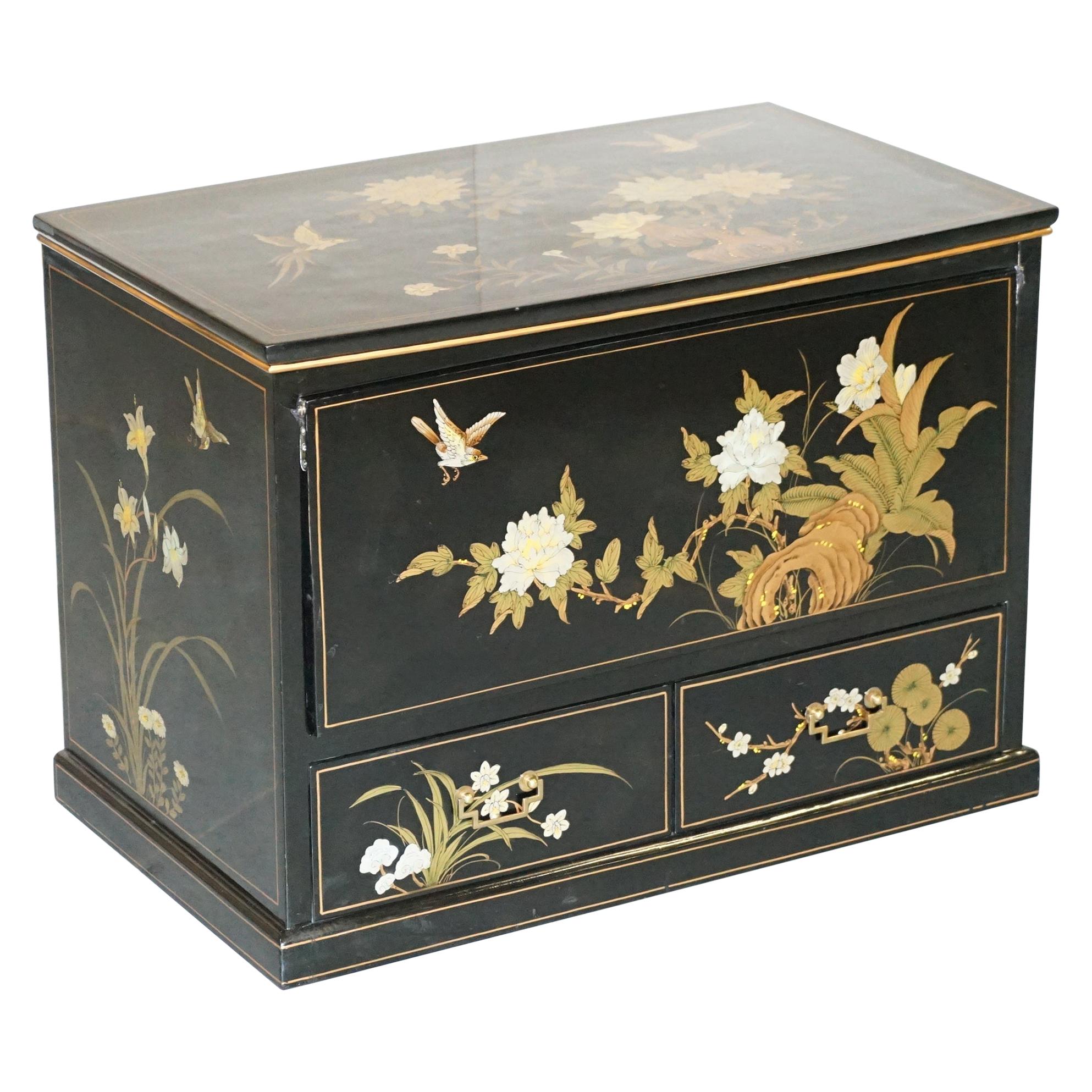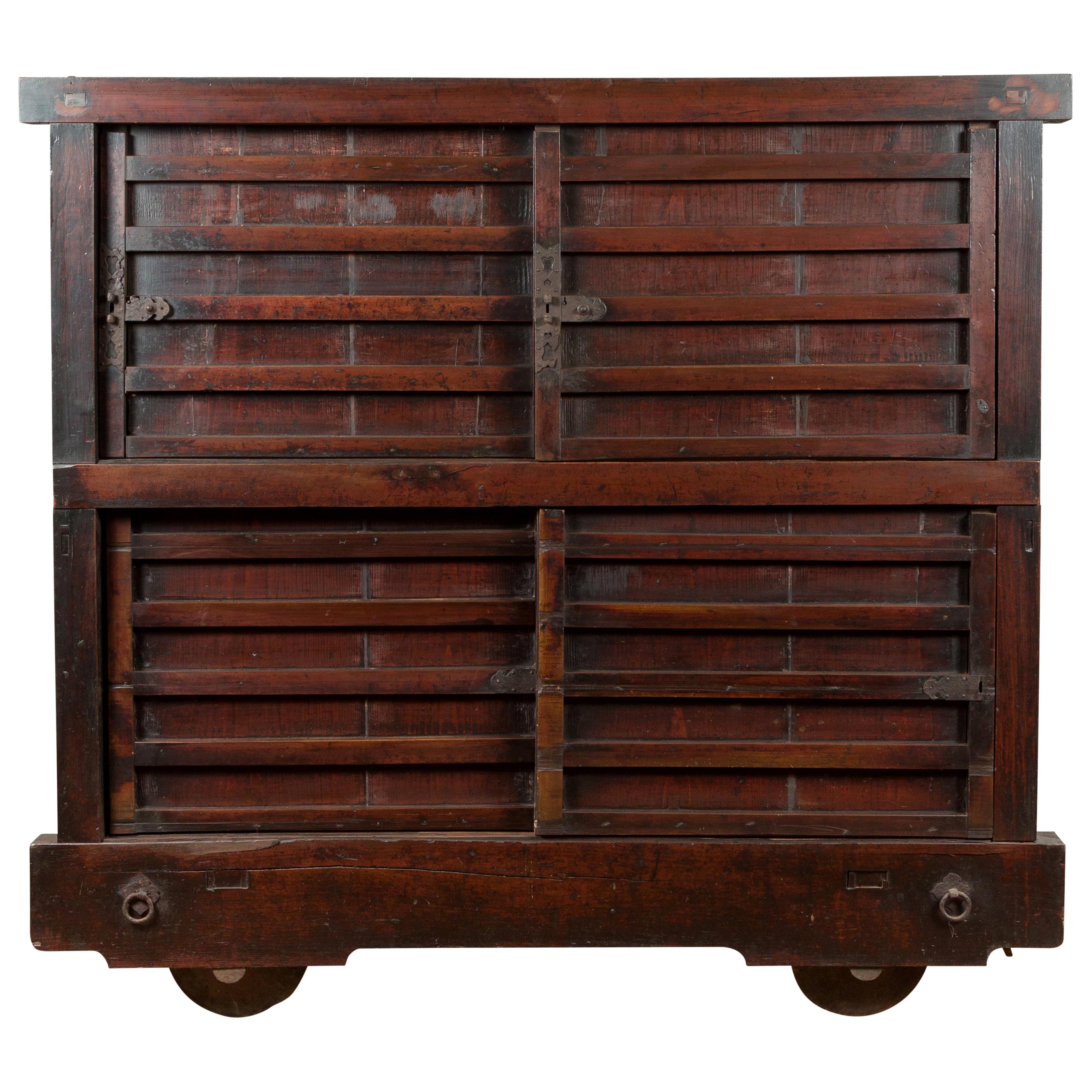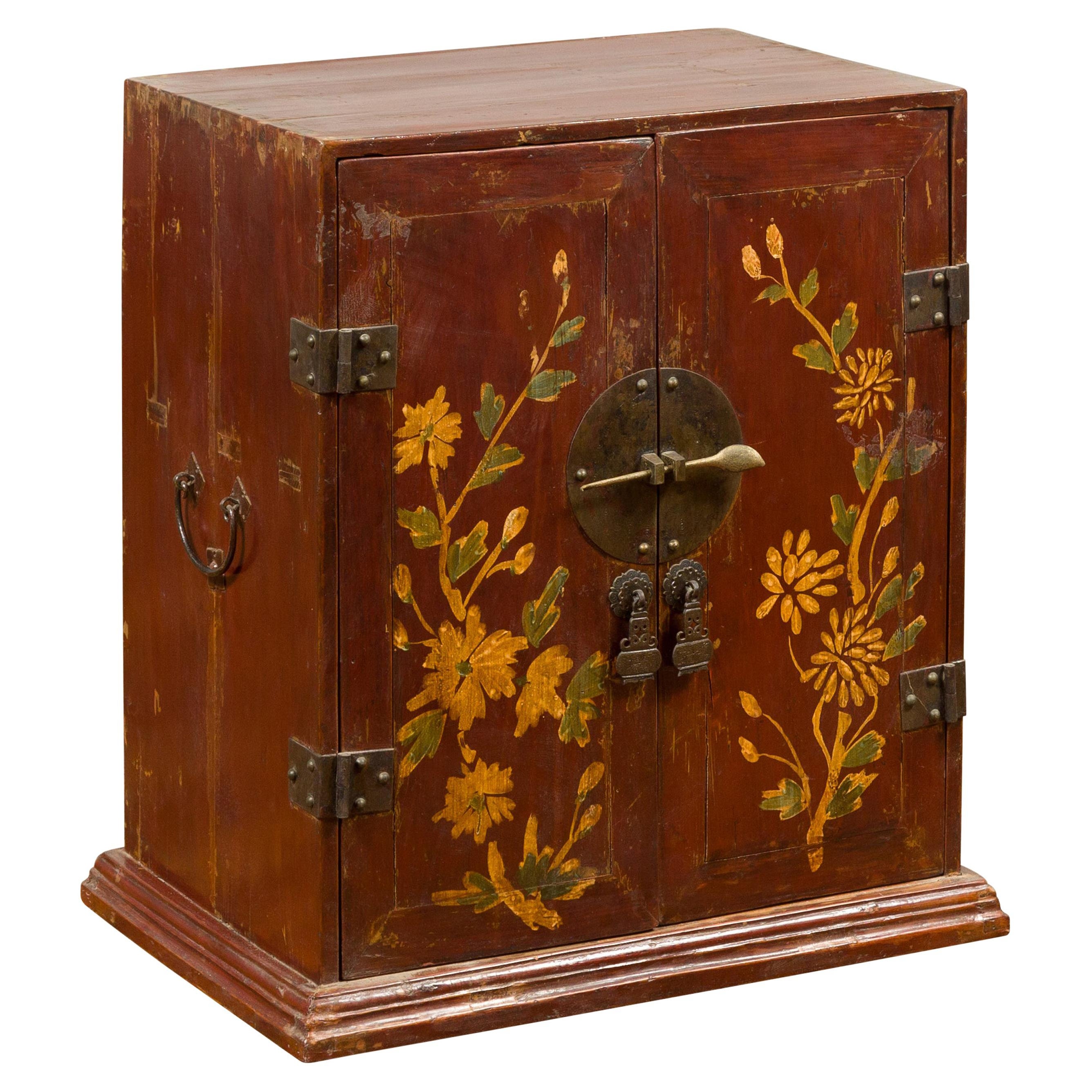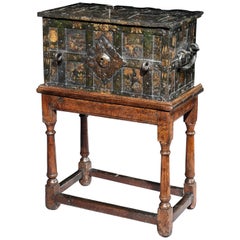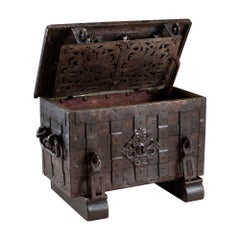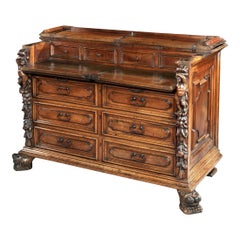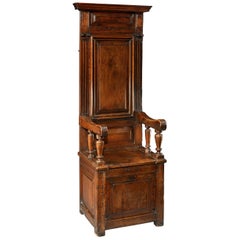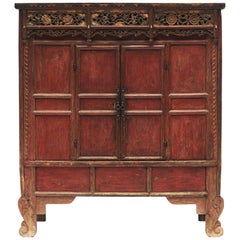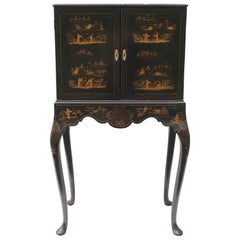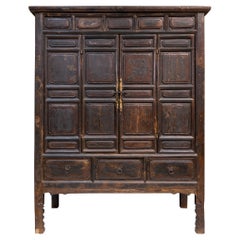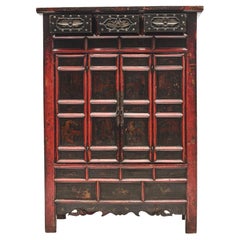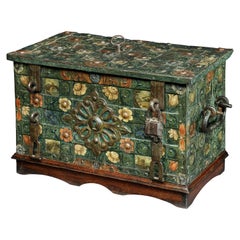
Strongbox, Safe, Late 16th Century, Nuremberg, Iron, Naïve, Painted, Oak Stand
View Similar Items
Want more images or videos?
Request additional images or videos from the seller
1 of 18
Strongbox, Safe, Late 16th Century, Nuremberg, Iron, Naïve, Painted, Oak Stand
About the Item
- Dimensions:Height: 19.3 in (49 cm)Width: 31.7 in (80.5 cm)Depth: 18.31 in (46.5 cm)
- Style:Elizabethan (Of the Period)
- Materials and Techniques:
- Place of Origin:
- Period:
- Date of Manufacture:circa 1580
- Condition:Wear consistent with age and use.
- Seller Location:BUNGAY, GB
- Reference Number:1stDibs: LU3867317098761
About the Seller
5.0
Vetted Professional Seller
Every seller passes strict standards for authenticity and reliability
Established in 1985
1stDibs seller since 2018
97 sales on 1stDibs
Typical response time: 7 hours
Authenticity Guarantee
In the unlikely event there’s an issue with an item’s authenticity, contact us within 1 year for a full refund. DetailsMoney-Back Guarantee
If your item is not as described, is damaged in transit, or does not arrive, contact us within 7 days for a full refund. Details24-Hour Cancellation
You have a 24-hour grace period in which to reconsider your purchase, with no questions asked.Vetted Professional Sellers
Our world-class sellers must adhere to strict standards for service and quality, maintaining the integrity of our listings.Price-Match Guarantee
If you find that a seller listed the same item for a lower price elsewhere, we’ll match it.Trusted Global Delivery
Our best-in-class carrier network provides specialized shipping options worldwide, including custom delivery.More From This Seller
View AllStrongbox Safe Iron Painted Armada Chest Nuremberg Renaissance
Located in BUNGAY, SUFFOLK
Rare, small, late-Renaissance, Nuremberg, iron, 'armada box', strongbox or travelling safe with its original, naïve, painted decoration
This is a rare, s...
Category
Antique 16th Century German Renaissance Arms, Armor and Weapons
Materials
Iron
Strongbox Safe Chest Iron Painted Armada 12 bolt lock Nuremberg Renaissance
Located in BUNGAY, SUFFOLK
Rare, small, late-Renaissance, Nuremberg, iron, 'armada box', strongbox or travelling safe with its original, naïve, painted decoration on later sledge feet...
Category
Antique Early 1600s German Renaissance Painted Furniture
Materials
Iron
Cassettone or Bureau-Chest, Late 16th Century, Italian Renaissance, Walnut
Located in BUNGAY, SUFFOLK
Exceptional museum quality, Italian, renaissance walnut cassettone with fitted bureau in the upper part & exceptional Bambocci carving, Lombardy.
This magnificent cassettone exudes the character and quality of the finest, late-Renaissance furniture. Late 16th century, Northern Italian furniture often had the sides, legs or angles, 'a Bambocci', incorporating carved figures which were unique sculptures in their own right. The putti on this cassettone are beautifully carved and of sculptural quality. Each angel has one arm raised to heaven, a poignant touch. Showing customary signs of wear from time, the lion’s paw feet make a great statement. This cassettone was conceived to have visual impact through the quality of the carving, as well as being very practical with the writing compartment fitted in the top part. It has survived in very original condition with a few small repairs and losses, and the color and patina are warm and lustrous. This cassettone was illustrated in one of the seminal works on Lombardy furniture in the 1969 and has been in two renowned collections.
The hinged top in two sections faced with a solid moulded edge. The front part has a fall front and opens to reveal a writing compartment. The fall front retains its original lock and is concealed with a false drawer which is above three drawers. All with moulded panels, escutcheons and retaining the original iron handles. The front ends have exceptional, bambocci, carved putti raising their arms to heaven above trailing foliage. Standing on magnificent lion...
Category
Antique 16th Century Italian Baroque Furniture
Materials
Walnut
Cathedra or Throne Chair, Late 16th Century, French Second Renaissance, Walnut
Located in BUNGAY, SUFFOLK
A moulded cornice sits above the high, panelled back with fluting and applied roundels. The later, metal pin on the left edge releases the central, moulded panel in the back which retains its original hinges. When the pin is removed the panel can be lowered, revealing a large area behind. The scroll arms are supported by tapering turnings which can be compared with mid-16th century benches of the nave such as those in the churches in Gerberoy and Coivrel which are in Oise, the Piccardie region of Frances.
The panelled, box seat has later 18th century hinges...
Category
Antique 16th Century French Renaissance Armchairs
Materials
Walnut
Cassone Venetian 16thc Renaissance Cedar Original Stand Neptune Armorial Unicorn
Located in BUNGAY, SUFFOLK
A large, museum-quality, late-16th century, cedar, Venetian, cassone on its original stand ; the sea creature ornament probably drawn from De la Cosmographie Universelle, livre III, engraving 1550-1568
• This is the only, known, cassone of this type retaining its original stand.
• The collection in Italy that it originally came from was a palazzo that it had reputedly been in for generations of the same family and this most likely why the stand has survived.
• The decoration is very unusual, and delightful in the array of sea creatures depicted. The connection of the region with the sea is very strong.
• The inner lid is very practical and can be used for display or serving. The interior offers masses of storage space which is particularly suitable for textiles being cedar which repels moths.
• The cassone is a beautiful, rich colour and has developed a lustrous patina.
• The cassone is Illustrated & discussed in discussed in ‘Woods in British Furniture Making’, (Bowett) c13
Provenance: Private collection, Mayorca. Private collection, Italy
Related to: Cassone in V&A collection, no 4886-1858
Width 177 cm., 70 in., Height 87 cm., 34 ½ in. Depth 68 cm. 26 ½ in.
With lid open 155 cm., 61 in
“Late 16th and 17th century, London inventories confirm that cypress wood chests were relatively common in prosperous households. In 1598 there was a cypress chest in the hall of John Mason, a vintner, valued at 50 shillings. It was the most expensive piece of furniture in the house. Similarly there was a ‘fair cypress chest’ in the great chamber of Adrian Moore, haberdasher, in 1618, and a cypress chest worth £ 9 in the hall of Thomas Willis, a clotherworker in 1630. The chests were sometimes described as ‘great’ or ‘small’ but not otherwise described – presumably they were familiar to the compilers of the inventories. They were placed in halls, chambers and parlours, places where they would have been on prominent view. It is noteworthy that only the chests were imported and not, apparently, the wood. “ (p282, Cypress, Woods in British Furniture making)
The decoration is very unusual, and delightful in the array of sea creatures depicted. The connection of the region with the sea is very strong. I have never seen one of these chests on its original stand. The collection in Italy that it came from was a palazzo that it had reputedly been in for generations of the same family and this most likely why the stand has survived. In practical terms, the stand makes the chest a comfortable height to use. The exterior of the chest is a beautiful, mellow colour and has developed a lustrous patina.
The top comprises three planks faced with a shallow, cleated, moulded edge nailed on. The front retains its original hasp and lockplate and, as is commonly found, the lock has been removed but, unusually the original ring hinges have survived. The top opens to reveal an inner lid with ring hinges and a brass ring, revealing a large open storage compartment below, the bottom lined with an old fabric. The underside of the lid retains its original penwork and pierced decoration. The central panel depicts sea creatures, sharks, flatfish, monster fish, sea horses, Neptune and mermaids, probably drawn from De la Cosmographie Universelle, livre III, engraving 1550-1568. The panels either side depicting a crown, the sun and unicorns amongst stylised floral sprays. The surrounding naive penwork border features repeats of three naked ladies in the sea, a man wearing an animal mask with two dogs in a forest and a huntsman with two dogs. The floor of the inside of the cassone is upholstered in an 18th century red and yellow striped woven textile the colours of the Catalan flag. The front is decorated with pierced, silhouettes of beasts, trees and figures. The sides are plain with iron carrying handles. On its original stand, with similar decoration, and bearing a cartouche which would have been decorated with the arms of its original owner. Italian, last quarter of the 16th century.
Condition Report : Old repair to bottom left moulding of top. Some hairline cracks to top. The hasp, lockplate and ring hinges are original, the lock has been removed. Handles probably 18th century. The inner lid was probably added in the 18th century and supporting mechanism in the 19th century. Exceptional original, lustrous colour and patina.
Measures: Width 177 cm. 70 in., height 87 cm. 34 ½ in., depth 68 cm. 26 ½ in.
The cassone was the principal piece of furniture in 16th century, Italy. These chests were made as bridal gifts for nobles and aristocrats from cedar specifically for storing their much prized and valued hangings, clothing and linens, as the wood repels moths and the sweet fragrance delicately scents fabrics. Consquently the cassone, as in this example might be decorated with the family coat of arms or with depictions of virtue and edifying episodes from the Bible. A young woman could not be allowed to enter marriage without some instruction. Later, many cassoni were taken apart so that the decorated front panel could be hung as a painting. The stand of this cassone has a cartouche that would have contained a painted coat of arms in the centre which shows that it was conceived for a noble family. Such cypress or cedar chests, incised in bas relief and pyrographically engraved, have long been associated with Venice and typically have a naïve decoration on the exterior.
Literature:
The 'cypress chests' containing 'arras, counterpoints, costely apparel, tents, and canopies, fine linen, Turkey cushions...
Category
Antique 16th Century Italian Renaissance Cabinets
Materials
Cedar
Chest or Stollentruhe, Early 16th Century, German Gothic, Oak Chest, Original
Located in BUNGAY, SUFFOLK
This standing chest is of clamp-front construction, extensively decorated with long, ironwork straps with quatrefoil finials which ‘wrap’ around it, and has an ornate, central lockplate, and front legs with full, height stiles. The ironwork straps and finials are fixed with convex, headed nails: running along the front, five long straps; the two side straps; and the five straps on the top. On the chest front, centrally placed, is a large, iron lockplate with four outer, radiating spade finals in each corner and three, superimposed spade finials (a symbol of nobility) which are pierced with the initials ‘BB’. The lockplate receives a corresponding, external hasp fitted to the lid. Below the floor of the chest, the two front stile legs retain most of their original height. The lid is supported by substantial iron strap hinges that extend right down the back of the chest. Inside the chest at the left end is a shallow, oak till.
Construction The chest is of joined, 'clamp-front' construction, reinforced by the nailed, iron mounts. In total it uses ten, oak boards which were riven and planed. The back and front are each formed from a large single plank held to the full height stiles by long, pegged tenons. The sides are also single boards joined into the stiles using long tenons held by dowels, and extend down below the chest bottom, concealing the ends of the bottom boards. The bottom consists of a single board cut into the sides and shallow rebates in the stiles. The front and back boards are dowelled into the bottom boards. The lid which overhangs the sides has a narrow cleat at each end, and consists of one wide plank which has bowed a little as a result of shrinkage.
Ironwork : The wrought ironwork straps, lockplate, hasp and lock all appear all appear to be early, and of the same original manufacture and are fixed with convex headed nails. There is mild dark staining of the oak around the iron mounts, possibly because of low tannin content in the oak.
Length 172 cm., 67 ¾ in., Height 71.5 cm., 28 ¼ in., Depth 63 cm., 24 ¾ in.,
Related to: No 900:2-1904 V&A Museum, London. Stadtmuseum Dusseldorf. Decorative Arts Museum Berlin. Museen Schleswig-Holstein & Hamburg. A related example featuring elaborately-carved feet and formerly in the Horsham Museum, West Sussex, sold at Christie's in 2010 for £97,250 and another example, again with carved feet sold at Sothebys in 2006 for £48,000.
Literature: A similar example is illustrated in H. Lüttgens, Alt- Aachener Wohnkultur; Ein Rundgang durch ein altes Aachener Haus im Wohnstil des 18. Jahrhunderts, Aachen, n.d., ill. 12, and another comparable iron-bound chests...
Category
Antique 16th Century German Gothic Blanket Chests
Materials
Oak
You May Also Like
15th-16th Century Ming Dynasty Cabinet. Red Lacquer
Located in Kastrup, DK
Rare and well-preserved 16th century cupboard / cabinet.
Detailed carved top section depicting a floral leaf design and people in polychrome lacquer.
Front with red lacquer, pair of ...
Category
Antique 16th Century Chinese Ming Cabinets
Materials
Elm
19th Century Chinoiserie Cabinet on Stand
Located in East Hampton, NY
19th century chinoiserie collector's cabinet on gilt and ebonized decorated apron over Queen Anne's style cabriole legs.
Category
Antique 19th Century Furniture
Late 19th Century Large Cabinet from Shanxi, China
Located in Singapore, SG
Originally a black lacquer cabinet, but much of the lacquer have peeled off, revealing the lovely wood underneath. Only the middle doors open, the panels on the left and right are se...
Category
Antique Late 19th Century Chinese Qing Furniture
Materials
Iron
Late 18th Century Decorated Cabinet from Shanxi, China
Located in Kastrup, DK
Late 18th century cabinet from Shanxi, China.
Original red and black lacquer with a light clear surface finish, which highlights the lovely natural patina.
Pair of bi-fold doors wi...
Category
Antique Late 18th Century Chinese Qing Cabinets
Materials
Iron
Late 19th Century Nam Wood Apothecary Cabinet with Multiple Drawers
Located in Yonkers, NY
A Chinese Qing Dynasty period late 19th century apothecary merchant's cabinet made in two parts of nam wood (a variety of cedar) with shelves and multiple drawers. Created in China d...
Category
Antique Late 19th Century Chinese Qing Cabinets
Materials
Cedar
Rare & Exquisite Antique 19th Century Chinese Red Lacquer Cabinet on Stand
Located in West Sussex, Pulborough
We are delighted to offer for sale this exquisite and exceptionally rare 19th century Chinese red lacquer cabinet on stand
A good looking and decorative piece, this is circa 1860-18...
Category
Antique 1860s Chinese Chinese Chippendale Furniture
Materials
Wood
$6,326 Sale Price
20% Off
Recently Viewed
View AllMore Ways To Browse
16th Century Oak Panel
Asian Chest On Stand
Manor Oak
16th Century Tudor
Asian Painted Plate Black
16th Century Bed
Mermaid Handles
Antique German Bed
Ship Mermaid
17th Century Strong Box
Spanish Oak Chest
Antique Hasp Lock
Spanish Escutcheon
Tester Bed
Oak Twin Bed
Nuremberg Iron
Asian Jewelry Chest
16th Century Oak Chest

